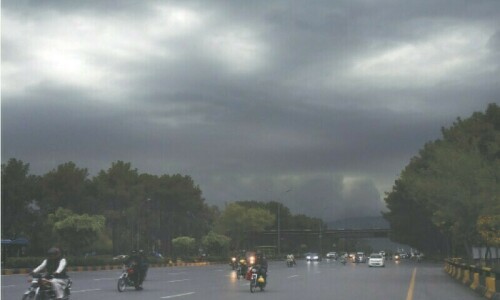FOR over two decades, Pakistan has been proscribing militant groups. But while this list of ‘banned’ groups has kept expanding, there has been little noticeable reduction in militant activity, apart from temporary periods of calm.
Two fresh entries have been made to Nacta’s list of banned groups: the Hafiz Gul Bahadur Group, closely linked to the TTP, and the Baloch separatist Majeed Brigade. Moreover, the state has labelled the proscribed TTP as ‘Fitna al Khawarij’, a reference to the rebel group dating back to the early Islamic period. But beyond issuing notifications and using historical and religious terms to delegitimise terrorist groups, a deeper probe is needed to ascertain why the state’s proscription regime has failed to produce the desired results.
Religiously inspired armed groups are a product of the Zia-era Afghan ‘jihad’, while nationalist militants with a separatist bent, particularly in Balochistan, have been around for longer. While the sectarian terrorist group Lashkar-i-Jhangvi was banned in 2001 by the Musharraf regime, the general outlawed five militant groups en masse in January 2002. In the febrile post-9/11 geopolitical atmosphere, it was widely believed that the late strongman had acted to keep Pakistan on the right side of the Americans, who had issued the ‘with us or against us’ ultimatum to foreign states. Regardless of the motivation, some action was taken against jihadi and sectarian groups. Yet 22 years after the event, the list of proscribed outfits has ballooned from five or six to the current 81. The list is an eclectic mix of armed religious outfits, separatists, and NGOs. But again, the key questions are: why does the list keep on growing, and why does militancy continue?
It appears that the state has pursued a flawed approach towards banning groups. After the first round of proscription in 2002, many of the groups took on new names and continued with business as usual. In some cases, their funds were not frozen, and their key leaders remained free men. Even today, some sectarian groups continue to operate with freedom under different names.
To truly neutralise the militant threat, only representatives of the state — the military and civil armed forces — should be allowed to bear arms. Moreover, the masterminds and ideologues of terrorist groups need to be prosecuted legally, and all their sources of funding frozen. A complementary effort to neutralise groups promoting extremist ideologies is also required.
Furthermore, the root causes that attract many ordinary citizens to the terrorist cause — injustice, poverty, lack of opportunity — need to be addressed. After the 2002 proscription, this paper had written that the ban “should have a salutary effect on the law and order situation … and lead to … socioeconomic normality”. Twenty-two years later, we still await this elusive normality.
Published in Dawn, August 2nd, 2024














































Dear visitor, the comments section is undergoing an overhaul and will return soon.